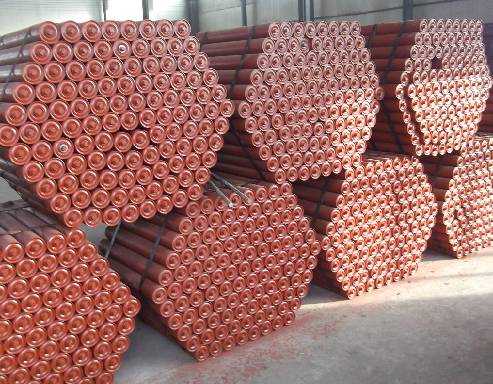 Afrikaans
Afrikaans  Albanian
Albanian  Amharic
Amharic  Arabic
Arabic  Armenian
Armenian  Azerbaijani
Azerbaijani  Basque
Basque  Belarusian
Belarusian  Bengali
Bengali  Bosnian
Bosnian  Bulgarian
Bulgarian  Catalan
Catalan  Cebuano
Cebuano  Corsican
Corsican  Croatian
Croatian  Czech
Czech  Danish
Danish  Dutch
Dutch  English
English  Esperanto
Esperanto  Estonian
Estonian  Finnish
Finnish  French
French  Frisian
Frisian  Galician
Galician  Georgian
Georgian  German
German  Greek
Greek  Gujarati
Gujarati  Haitian Creole
Haitian Creole  hausa
hausa  hawaiian
hawaiian  Hebrew
Hebrew  Hindi
Hindi  Miao
Miao  Hungarian
Hungarian  Icelandic
Icelandic  igbo
igbo  Indonesian
Indonesian  irish
irish  Italian
Italian  Japanese
Japanese  Javanese
Javanese  Kannada
Kannada  kazakh
kazakh  Khmer
Khmer  Rwandese
Rwandese  Korean
Korean  Kurdish
Kurdish  Kyrgyz
Kyrgyz  Lao
Lao  Latin
Latin  Latvian
Latvian  Lithuanian
Lithuanian  Luxembourgish
Luxembourgish  Macedonian
Macedonian  Malgashi
Malgashi  Malay
Malay  Malayalam
Malayalam  Maltese
Maltese  Maori
Maori  Marathi
Marathi  Mongolian
Mongolian  Myanmar
Myanmar  Nepali
Nepali  Norwegian
Norwegian  Norwegian
Norwegian  Occitan
Occitan  Pashto
Pashto  Persian
Persian  Polish
Polish  Portuguese
Portuguese  Punjabi
Punjabi  Romanian
Romanian  Russian
Russian  Samoan
Samoan  Scottish Gaelic
Scottish Gaelic  Serbian
Serbian  Sesotho
Sesotho  Shona
Shona  Sindhi
Sindhi  Sinhala
Sinhala  Slovak
Slovak  Slovenian
Slovenian  Somali
Somali  Spanish
Spanish  Sundanese
Sundanese  Swahili
Swahili  Swedish
Swedish  Tagalog
Tagalog  Tajik
Tajik  Tamil
Tamil  Tatar
Tatar  Telugu
Telugu  Thai
Thai  Turkish
Turkish  Turkmen
Turkmen  Ukrainian
Ukrainian  Urdu
Urdu  Uighur
Uighur  Uzbek
Uzbek  Vietnamese
Vietnamese  Welsh
Welsh  Bantu
Bantu  Yiddish
Yiddish  Yoruba
Yoruba  Zulu
Zulu conveyor head and tail pulley
Understanding Conveyor Head and Tail Pulleys
In the world of material handling and bulk transportation, conveyor systems play a crucial role in the efficient movement of goods. A vital component of these conveyor systems is the head and tail pulleys. Understanding the function and significance of these components can greatly enhance the efficiency and reliability of a conveyor system.
What are Head and Tail Pulleys?
Conveyor pulleys are cylindrical devices to which belts or cables are attached for the purpose of transporting materials. They are divided into two primary categories the head pulley and the tail pulley. The head pulley, located at the discharge end of the conveyor, is where the belt receives its drive. It is typically powered, either by electric motors or hydraulic systems, enabling the movement of the conveyor belt. In contrast, the tail pulley is located at the loading or feeding end of the conveyor. It provides tension to the conveyor belt and facilitates the return path of the belt after it has discharged the material.
Functionality of Head and Tail Pulleys
The head pulley plays an instrumental role in controlling the direction of the belt movement. When the motor drives the head pulley, the belt moves along the conveyor system, transporting material from one point to another. The design of the head pulley is critical; it is usually equipped with a lagging surface that provides traction and prevents slippage of the belt. In many applications, the head pulley is also responsible for discharging the material off the conveyor belt, which can be done at an angle to allow for efficient loading onto trucks or hoppers.
On the other hand, the tail pulley is essential for maintaining belt tension. Having the correct amount of tension ensures that the belt operates smoothly and without any wrinkling or misalignment. The tail pulley also supports the return portion of the conveyor belt, enabling it to loop back to the head for a continuous operation. The design and placement of the tail pulley can affect the loading and unloading process; therefore, careful consideration must be given to the application requirements when selecting tail pulleys.
conveyor head and tail pulley

Materials and Design Considerations
The materials used for manufacturing head and tail pulleys are important for their durability and performance. Common materials include steel, rubber, and in some cases, specialized alloys that can withstand environmental wear and abrasive materials. The diameter and width of the pulleys must also align with the characteristics of the belt and the operational conditions of the conveyor.
Maintenance of Head and Tail Pulleys
Regular maintenance of head and tail pulleys is crucial to ensure optimal performance and longevity. Accumulated dirt and debris can lead to slippage and premature wear. Regular cleaning and inspection of the pulleys for signs of wear, alignment issues, or damage can help prevent costly breakdowns. The bearings within the pulleys should also be lubricated as recommended by the manufacturer to minimize friction and heat generation, which can lead to equipment failure.
Conclusion
In summary, head and tail pulleys are integral components of any conveyor system. They ensure the efficient transport and discharge of materials while maintaining the proper tension required for smooth operations. Understanding their functionality, material considerations, and maintenance needs can significantly improve conveyor performance and reliability. As conveyor technology continues to evolve, so too does the design and capability of pulleys, integrating advanced materials and engineering solutions to enhance the efficiency of material handling systems across various industries. With proper knowledge and maintenance, head and tail pulleys can contribute to the seamless operation of conveyor systems, ultimately driving productivity and efficiency.
-
Revolutionizing Conveyor Reliability with Advanced Rubber Lagging PulleysNewsJul.22,2025
-
Powering Precision and Durability with Expert Manufacturers of Conveyor ComponentsNewsJul.22,2025
-
Optimizing Conveyor Systems with Advanced Conveyor AccessoriesNewsJul.22,2025
-
Maximize Conveyor Efficiency with Quality Conveyor Idler PulleysNewsJul.22,2025
-
Future-Proof Your Conveyor System with High-Performance Polyurethane RollerNewsJul.22,2025
-
Driving Efficiency Forward with Quality Idlers and RollersNewsJul.22,2025





























